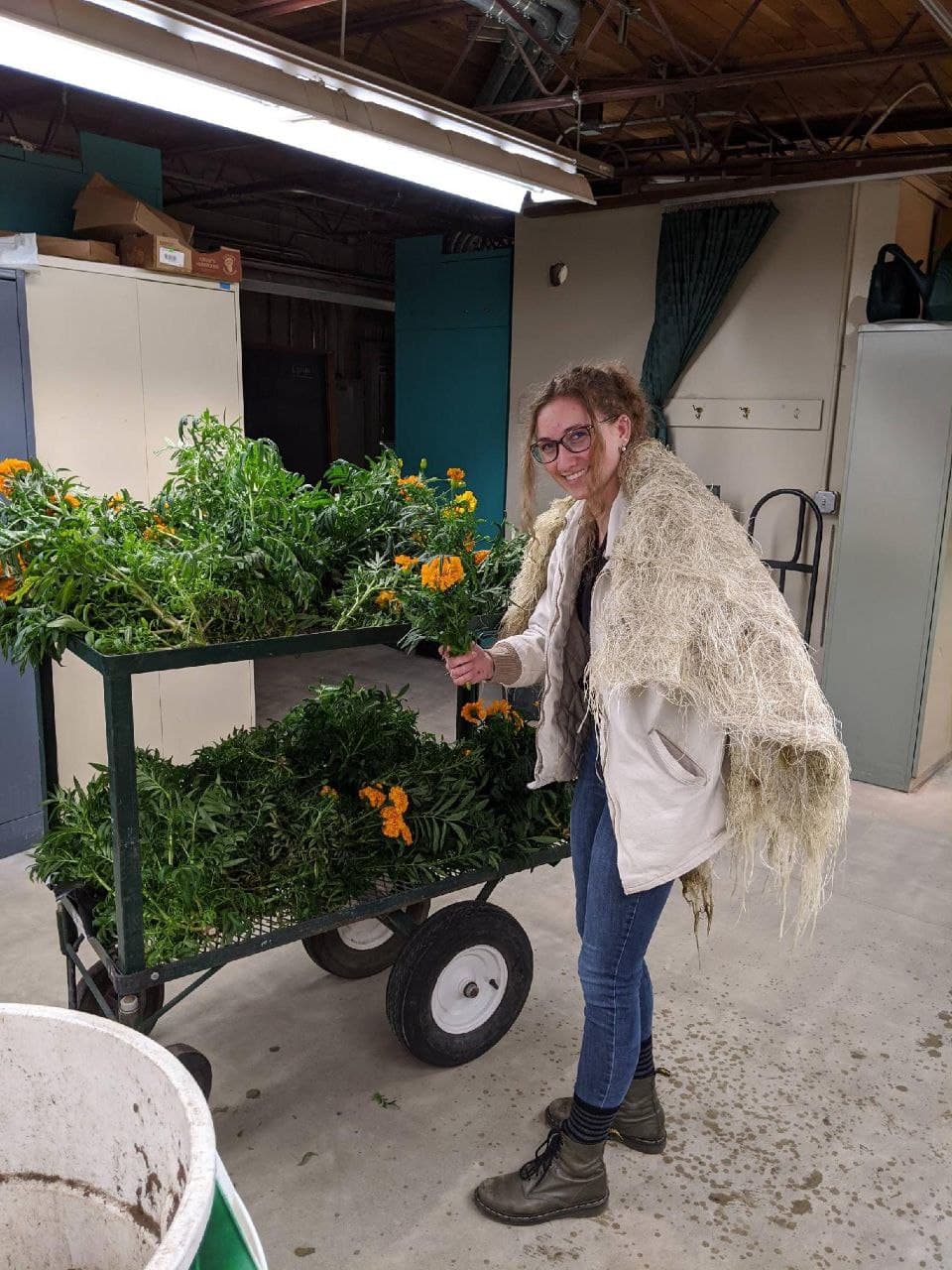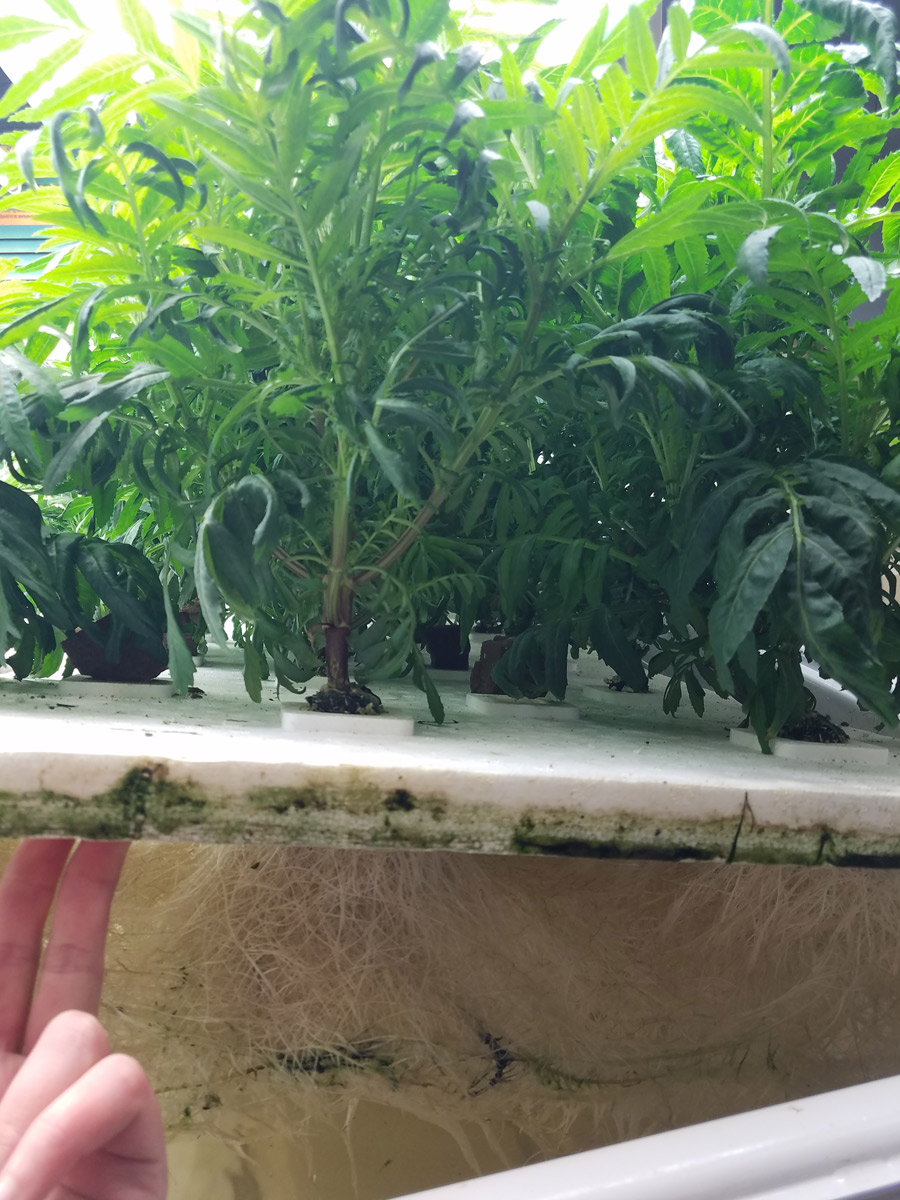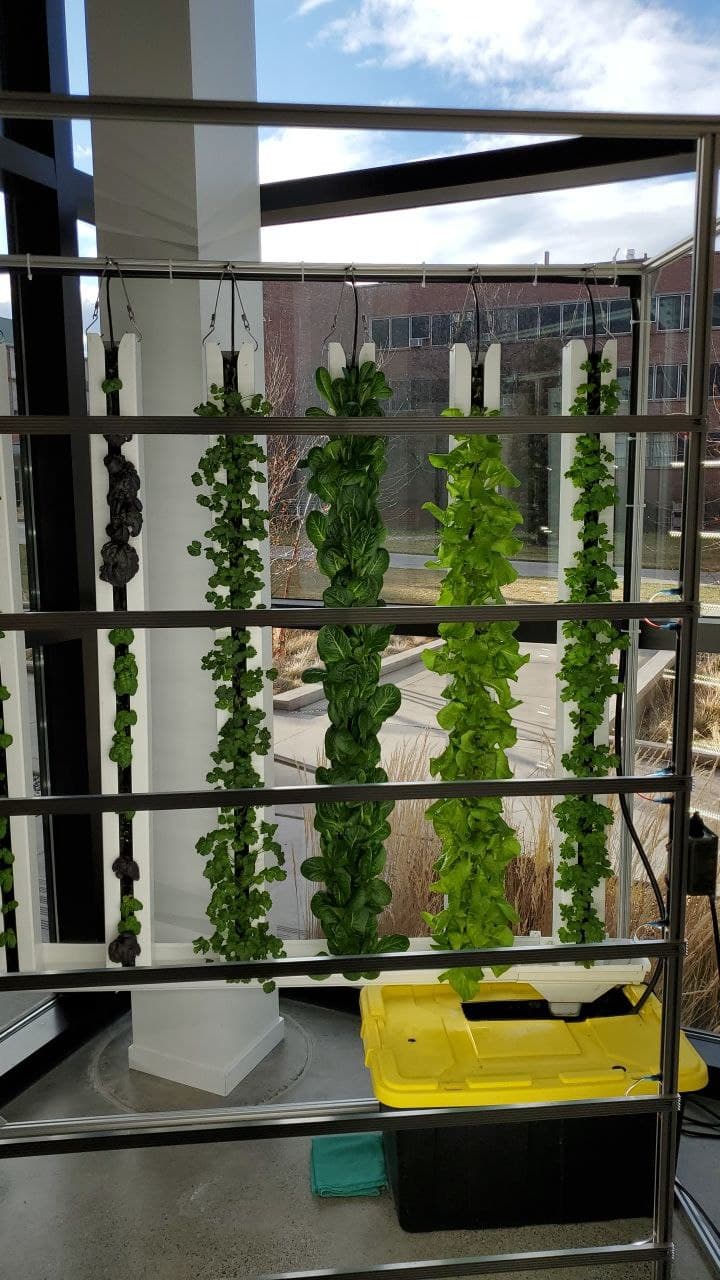Soil-Free Farming
Wander the University of Idaho’s Moscow campus and you’ll find plants growing in traditional spaces like greenhouses, test tubes and fields. You’ll also find plants growing in spaces you wouldn’t expect, like a vertical wall in the Integrated Research and Innovation Center (IRIC). The green wall is one example of how U of I’s Hydroponics Club is educating others about the benefits of growing plants without soil.
Plants grown hydroponically use a solution of water and nutrients, but no soil. This method requires less space, conserves soil and water and causes a faster growth rate. The green wall is 15 square feet, runs with LED lights and uses 30 gallons of water per month. The wall produces 90 heads of lettuce in a four-week cropping cycle.
“Because we’re not using soil, it’s a little more efficient in terms of plants receiving the water,” said Madi Hawkins, a graduate student studying plant science in the College of Agricultural and Life Sciences. “The plants are directly able to access the water, so we need to provide them with less because less is wasted.”
Hawkins helped launch the club in 2018 as an undergraduate. Jake Meeuwsen, a junior studying crop science, has also been involved since the club’s inception.
“I’ve learned that there is more than one way of growing,” Meeuwsen said. “You don’t need a big farm to grow food. You can have a tiny system at your home or in a greenhouse that will produce food and you’re able to eat that year-round. Being in a field, you only have four to five months to grow a years’ worth of food.”

The club manages four systems, producing lettuce, spinach, arugula and leafy herbs, which are sold at the Moscow Winter Market, a weekly community market.
“The kinds of things we grow are highly perishable,” Hawkins said. “For the Winter Market, we harvest at 8 a.m. and sell out by noon. So, you’re immediately getting that fresh produce.”
The club is also advising the Nez Perce Tribe and Vandals Dining on the installation of their own green walls to educate about local food sourcing and benefits of hydroponics in hopes of encouraging more hydroponic systems across the community.
Meeuwsen also sees hydroponics as a valuable tool for his future plant breeding career.
“I don’t think it will ever be a way of full-scale production of field crops,” he said. “I don’t think you’ll see wheat hydroponically grown, it’s just not feasible for the amount of wheat we use. But it is certainly a tool to use in breeding programs so we can push the plant along quicker. We can see responses in a greenhouse and not have to wait to get into the field.”

Hydroponic systems like the green wall help address the need for sustainable alternatives for feeding a growing population.
“We can go vertically to get a lot denser per area and get more yield,” Hawkins said. “That was our idea with the green wall; to showcase how little space you need in order to be successful.”

Article by Amy Calabretta, College of Agricultural and Life Sciences.
Published in the Spring 2021 issue of Here We Have Idaho.









